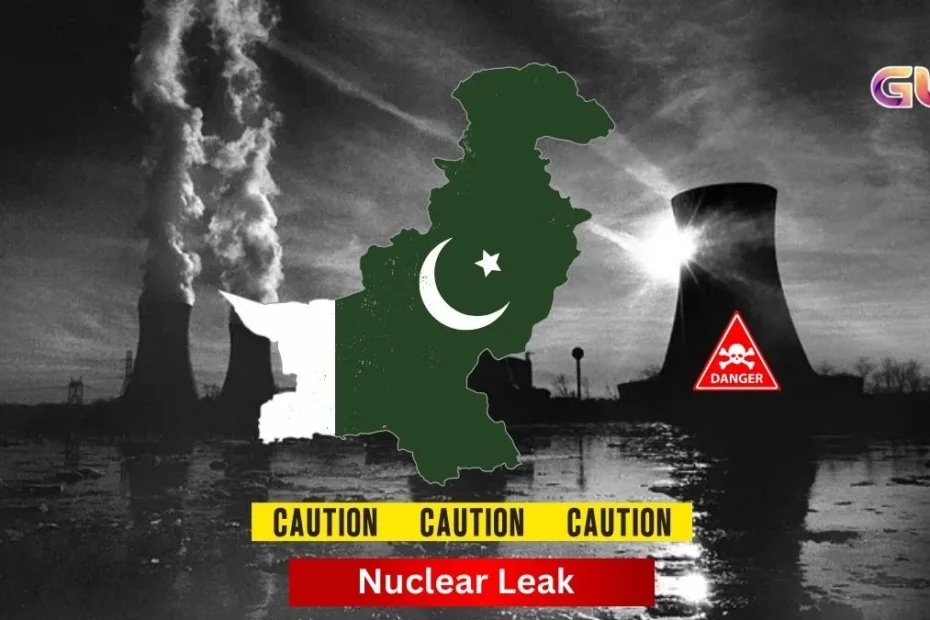Possible nuclear leak in Pakistan have drawn global attention after a series of precise airstrikes by India under Operation Sindoor reportedly targeted critical Pakistani military installations, including locations tied to its nuclear command and storage.
India’s air assault, carried out in retaliation to drone and missile attacks by Pakistan near the border regions of Jammu and Kashmir, Rajasthan, and Punjab, was aimed at terrorist and military targets. According to defence sources, the strikes avoided civilian areas but dealt a significant blow to Pakistan’s strategic infrastructure.
India’s Airstrikes Close to Pakistan’s Nuclear Facilities
Key targets included the Nur Khan Airbase near Rawalpindi, believed to be central to Pakistan’s nuclear command, and the Mushaf Airbase in Sargodha, located near Kirana Hills—a region widely reported to house underground nuclear storage tunnels. While no official confirmation has been made, satellite imagery and regional monitoring suggest significant damage may have occurred.
US Aircraft Spotted Conducting Nuclear Radiation Assessment
Following these developments, a U.S. Department of Energy aircraft was seen in Pakistan, raising speculation about a potential nuclear incident. The aircraft, identified as the B350 AMS, is typically deployed for nuclear emergency response operations.
Experts say its presence strongly indicates the U.S. is actively assessing nuclear radiation levels in Pakistan, potentially stemming from structural damage at sensitive nuclear sites. The move also underscores international concern over the safety and stability of Pakistan’s nuclear arsenal following the Indian airstrikes.
Egyptian Aircraft Adds New Layer to Nuclear Fears
Amid the tension, an Egyptian Air Force transport plane was tracked landing at Bhurban Airport in Muree, a hill district in Pakistan. The aircraft, call sign EGY1916, had arrived from China and left shortly after, according to Flightradar24 data.
Its brief but strategic presence has stirred speculation, particularly due to Egypt’s known reserves of Boron—a key radiation-absorbing element used in nuclear emergencies. Social media users and defence analysts suggest the flight may have been part of a radiation containment effort, reminiscent of the 1986 Chernobyl disaster, where boron was used to suppress nuclear emissions.
Strategic Messaging: India’s Warning to Pakistan?
A former U.S. official, quoted by The New York Times, suggested the Indian strike on Nur Khan Airbase may have been a strategic signal—demonstrating India’s capability to reach and neutralize Pakistan’s nuclear command infrastructure. The move reportedly alarmed both Pakistan and the U.S., leading to urgent diplomatic interventions.
Sources indicate U.S. Vice President JD Vance warned Indian Prime Minister Narendra Modi of “dramatic escalation risks” after receiving alarming intelligence assessments.
Pakistan’s Denial, But Tensions Persist
Although Pakistan’s Defence Minister Khawaja Asif denied any meeting of the National Command Authority (the body responsible for nuclear decisions), reports claim Prime Minister Shehbaz Sharif may have privately convened senior military leadership amid rising pressure.
Pakistan has confirmed Indian missile strikes hit at least three air force bases, including Nur Khan, but has not acknowledged any nuclear infrastructure compromise.
While no official reports of a nuclear leak in Pakistan have been confirmed, the movements of specialized international aircraft, intensified satellite surveillance, and emergency preparedness signals point to a high level of caution and uncertainty.
Given Pakistan’s underground nuclear storage network near Kirana Hills—spanning over 60 sq. km with fortified tunnels—the risk of undetected structural compromise is not being ruled out.
The developments have placed the Indian subcontinent under global watch, with the risk of a nuclear incident—intentional or accidental—raising alarms in strategic and humanitarian circles. As more information emerges and intelligence assessments deepen, the threat of a nuclear leak in Pakistan remains a critical concern for both regional peace and global security.
